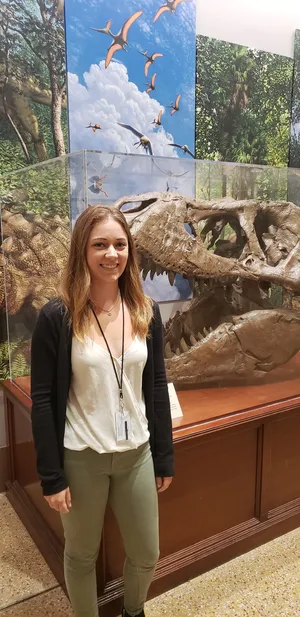NATIONAL MUSEUM OF NATURAL HISTORY
The Experts Behind the New Fossil Hall Wrap Their Minds Around ‘Deep Time’
The team behind the Smithsonian’s new dinosaur and fossil hall reflect on what “deep time” means to them.
/https://tf-cmsv2-smithsonianmag-media.s3.amazonaws.com/blogging/featured/DSC_7398-Pano.jpg)
For some of the minds behind the National Museum of Natural History’s new exhibit – the “David H. Koch Hall of Fossils – Deep Time” – choosing their favorite part is like picking their favorite child. Impossible.
Walking through the newly-opened hall, it’s not hard to see why. The exhibit is filled with approximately 700 fossils, including a giant sloth, massive sea predators and a popular Tyrannosaurus rex. Interactive videos invite visitors to learn when parts of their body evolved – such as lungs and mitochondria – or about the last time a drastic spike in temperature changed life on Earth forever. Jewel-box dioramas depicting intricate scenes from the past enchant visitors along the main walkways.
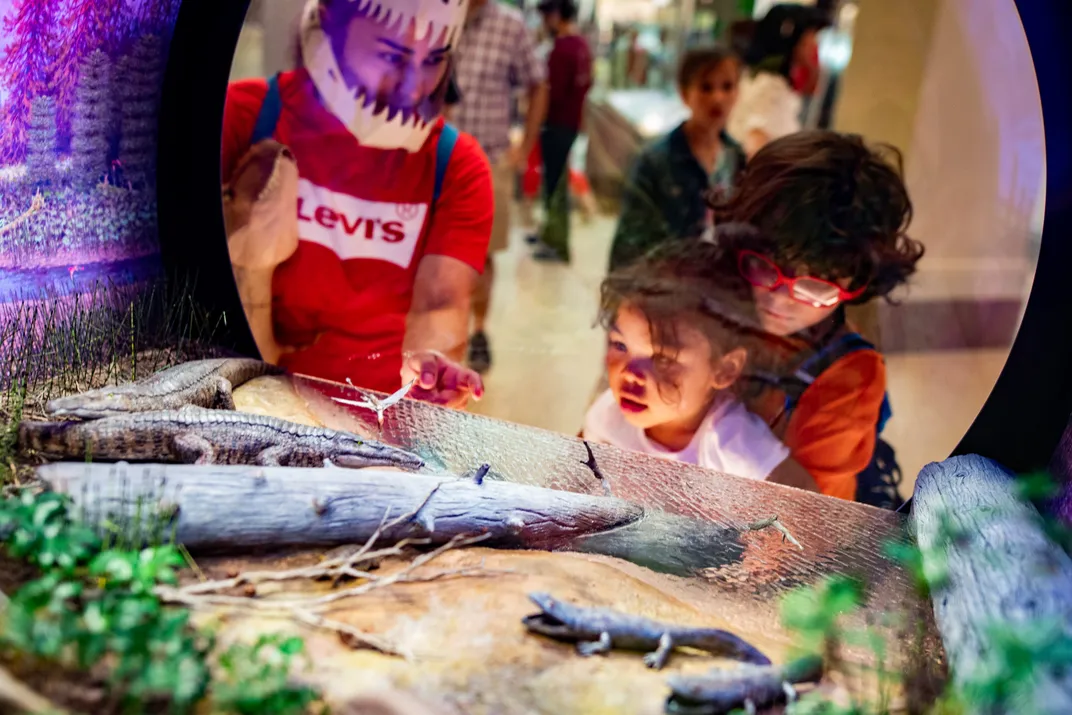
The museum spent over a decade brainstorming and crafting every inch of the exhibit to walk visitors through Earth’s vast history – called ‘deep time.’ From the first appearance of life, “Deep Time” describes climate changes throughout Earth’s history with a focus on evolution, extinction and human-driven impacts.
“We put everything we had into it,” says Anna “Kay” Behrensmeyer, the Smithsonian’s Curator of Vertebrate Paleontology. “The team couldn’t have worked harder.”
First impressions
For the hall’s reopening on June 8, Exhibition Project Manager Siobhan Starrs described the experience with a single word – “Awesome.”
On opening day, Starrs watched adults become kids again. She was excited to see where visitors went and overhear their comments – to her, the hall’s first visitors seemed excited, inspired and energetic.
“It was all those descriptive words that you want to feel at an exhibit opening,” she says.
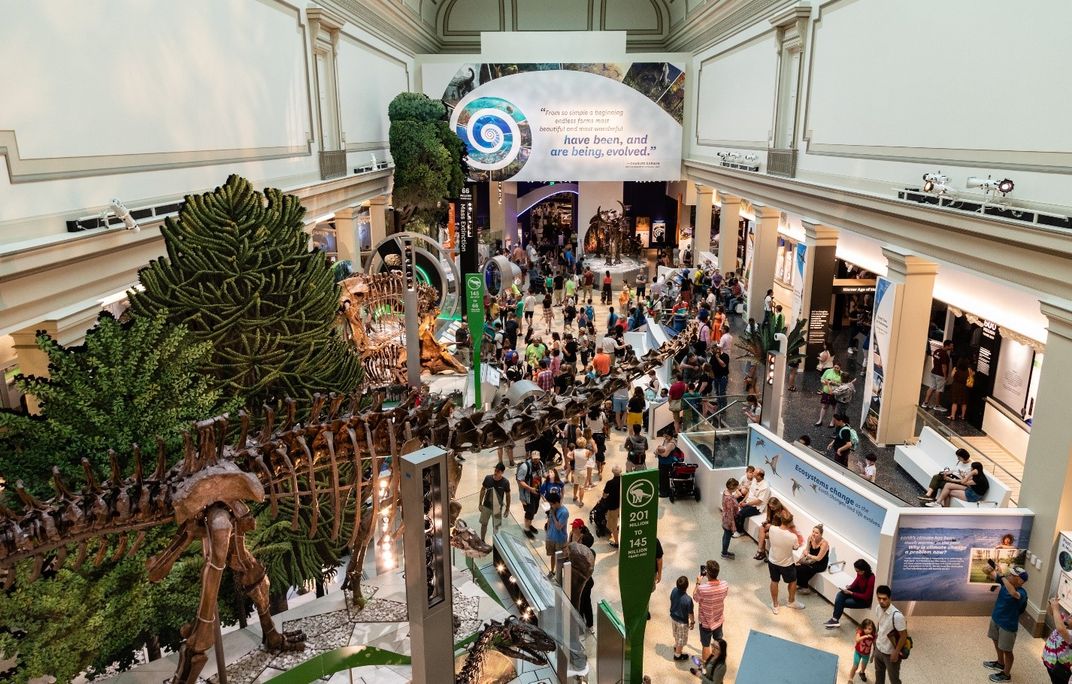
Even after opening weekend, many of the project leaders still meander into the hall. Scott Wing, the Smithsonian’s Curator of Fossilized Plants, and Matthew Carrano, Curator of Dinosauria, both stroll through on their way to lunch. Behrensmeyer also walks the exhibit every day to absorb visitors’ reactions to “Deep Time”, something she could only envision before its grand opening.
“When I would go out there before the crowds, I could imagine what it would be like,” Behrensmeyer says. “The best part was seeing the first kids go in and hearing all ages of people responding to it.”
Digging deep
As a geological concept, deep time is simple: the deeper scientists dig into the Earth, the further they go back into the past. Researchers drill into sediment at the bottom of the ocean, descend the walls of the Grand Canyon or extract long cores of ice at the poles to help them translate what Earth’s surface tells them about its history.
But it is not easy picturing time on such an extreme scale. Wrapping one’s mind around millions or billions of years is tough – even for scientists who do it all the time.
“You train yourself to think about it in a theoretical way, but emotionally we’re all kind of in the same place,” Wing says. “If you’re an astronomer, you might know the distances to some of the stars you’re looking at, but that doesn’t change the emotional impact of them being that far away.”
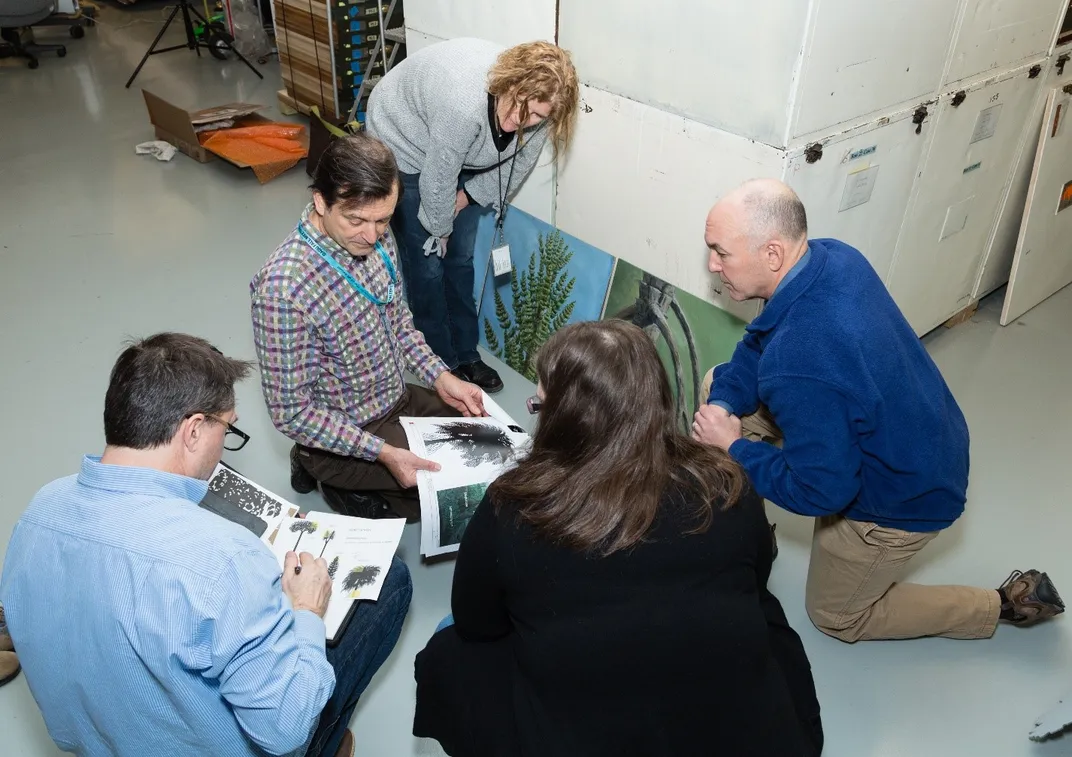
To enjoy the exhibit, however, visitors don’t need to become experts at visualizing all 4.6 billion years of Earth’s history.
“We get them to think about deep time for the first time by giving them different ways to think about it as they move through the exhibit,” says Amy Bolton, Education and Outreach Manager for “Deep Time”. “It helps them begin to understand why it’s important to understand Earth’s history.”
One of the most challenging parts about creating “Deep Time” was to get people to think beyond their own timeline, Starrs notes. The exhibit explores deeper connections through time to link humanity to the past. “It’s a new way of thinking about the world and our place in it,” she says.
Building Earth’s dynamic timeline
From the moment people enter the hall from the rotunda, they begin trekking backward through time. “Deep Time” is designed to follow stories – illustrative examples pulled from history and displayed in the order in which they happened. Various sections describe massive extinctions, the evolution of myriad living creatures and human-driven changes.
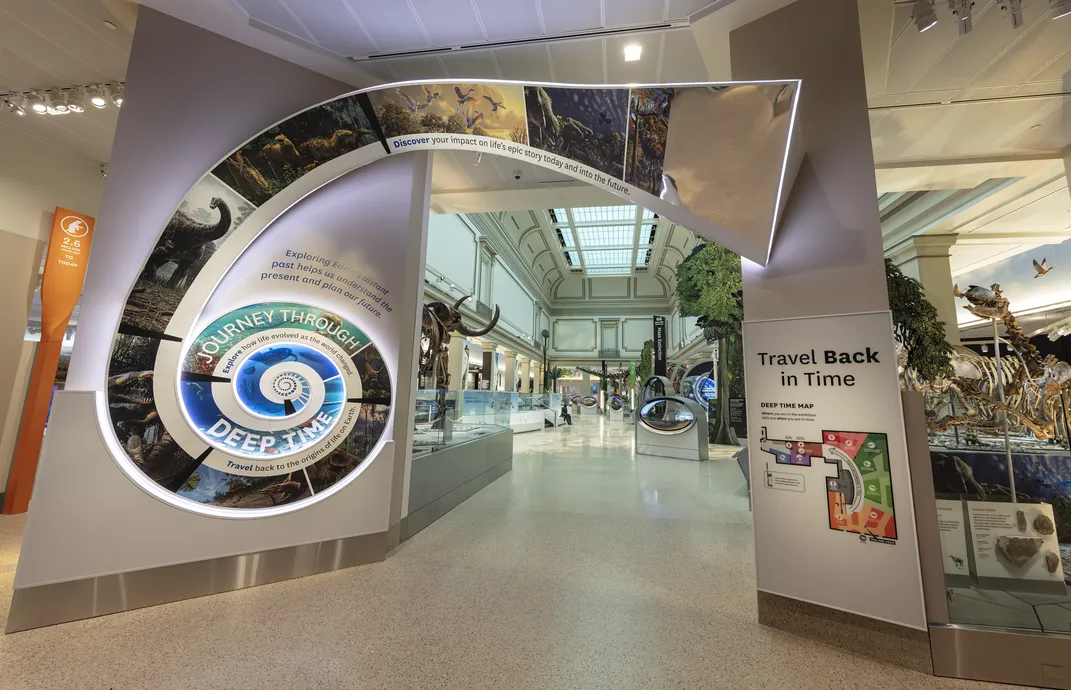
Covering Earth’s history in an exhibit required an elaborate network of collaboration among an enormous team of curators, project managers, artists, writers, architects, graphic designers and other staff. The team vetted each bit of information and scrutinized every detail. Not even miniscule tree leaves in the dioramas escaped their watchful eyes.
“It’s like people playing instruments in different rooms, but they’re all playing the same piece,” says Carrano, who was the brain behind mounting the skeletons. “Then, at the last minute, you lift the walls and they all have to be on time and on tempo.”
The result is an interactive, dynamic exhibit with countless details encompassing the planet’s biography. Animal species and plants that existed at the same time are clustered together in the hall – gone are displays where dinosaurs that lived millions of years apart stand in a row.
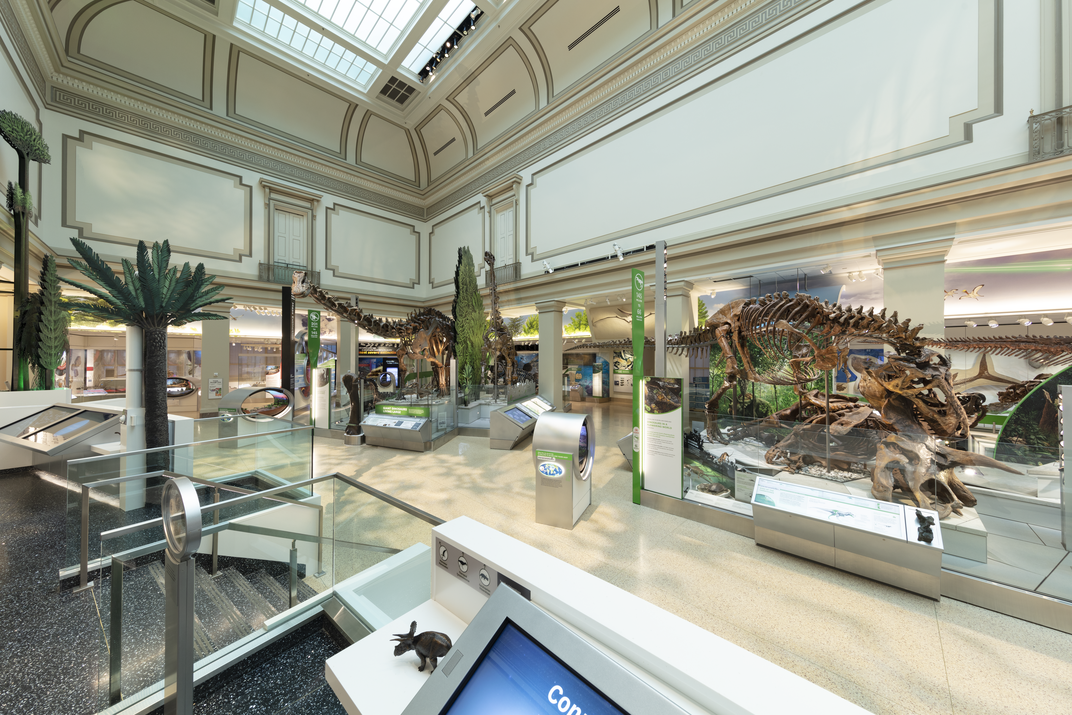
“It was the greatest experience of combined science, design, communication and art that I could ever have imagined,” Behrensmeyer says.
Humans in a changing world
“People should see themselves in the exhibit,” Bolton says. “They should feel personally connected to it through the scientists they see, the realization of what we have inherited from Earth’s immense history, and by grappling with how humans are a force of change today.”
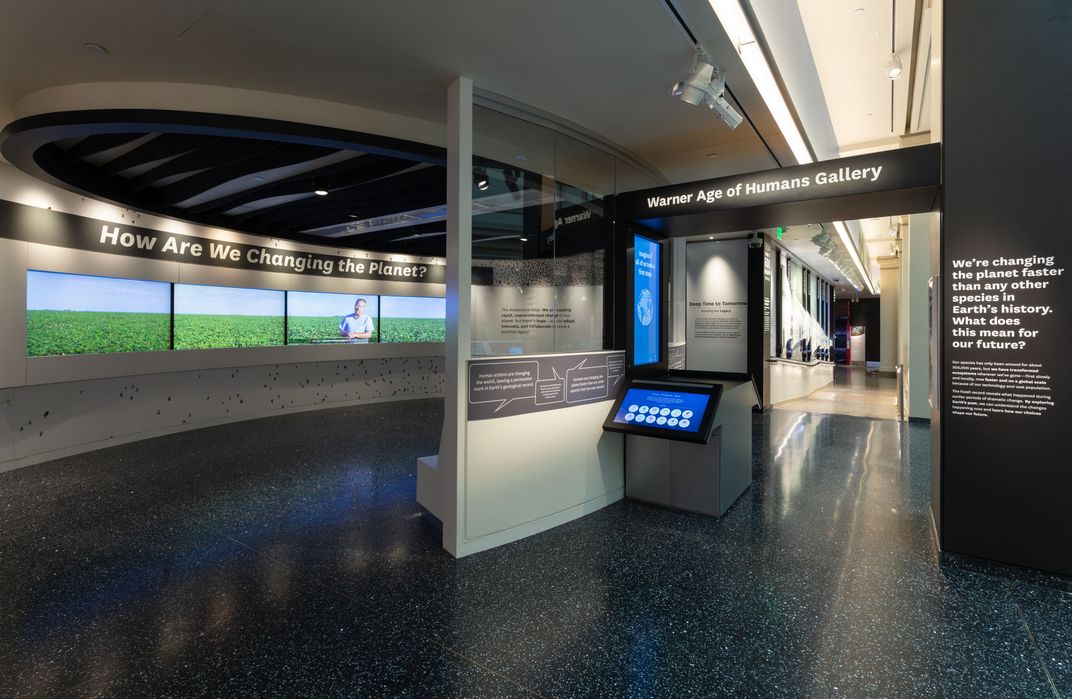
But the hall offers more than just a sobering theme of extinction and climate change. Its creators also hope that the museum’s visitors can appreciate the history of life on Earth and learn the benefits of understanding the past. There are opportunities throughout the exhibit to discover new perspectives on not only climate change, but also evolution and time.
“I hope it’s more like looking at the stars than it is like looking at five feet of plastic trash on a beach,” Wing says. “I hope that people can look at the exhibit and feel thrilled at the awesomeness of what they’re a part of.”
Related Stories:
Try These Hands-on Activities in the Smithsonian’s New Fossil Hall
Old Fossils, New Meanings: Smithsonian Exhibit Explores the History of Life and What it Means for Our Future
A Smithsonian Dino-Celebrity Finally Tells All
An Elegy for Hatcher the Triceratops
Q&A: Smithsonian Dinosaur Expert Helps T. rex Strike a New Pose

